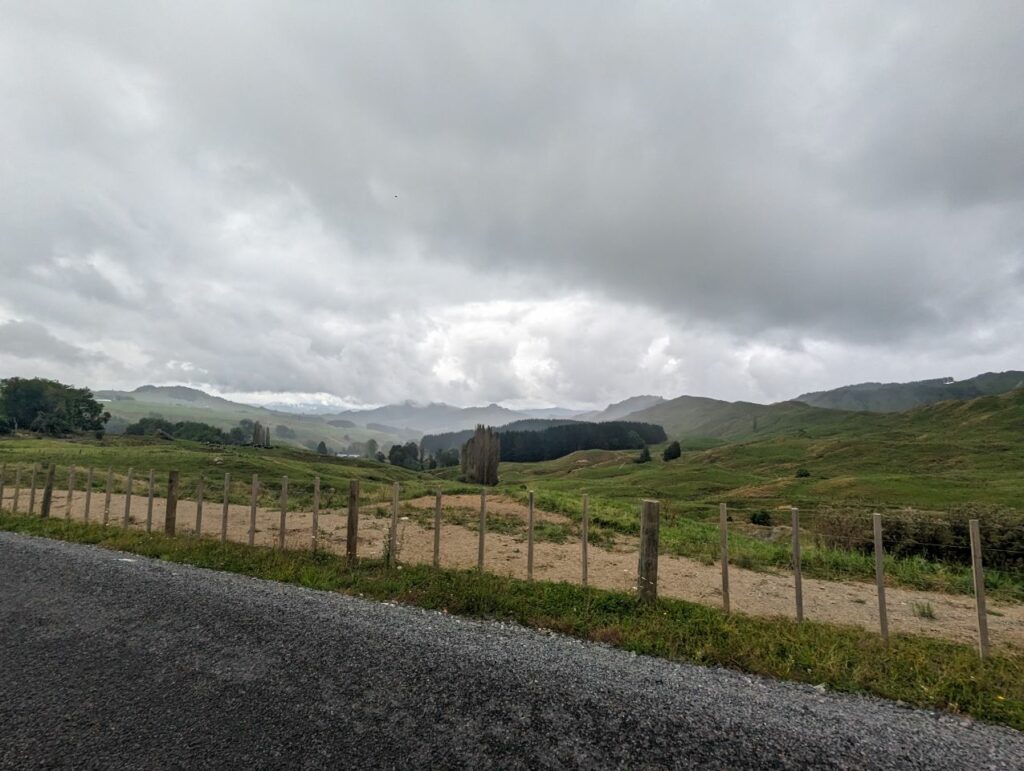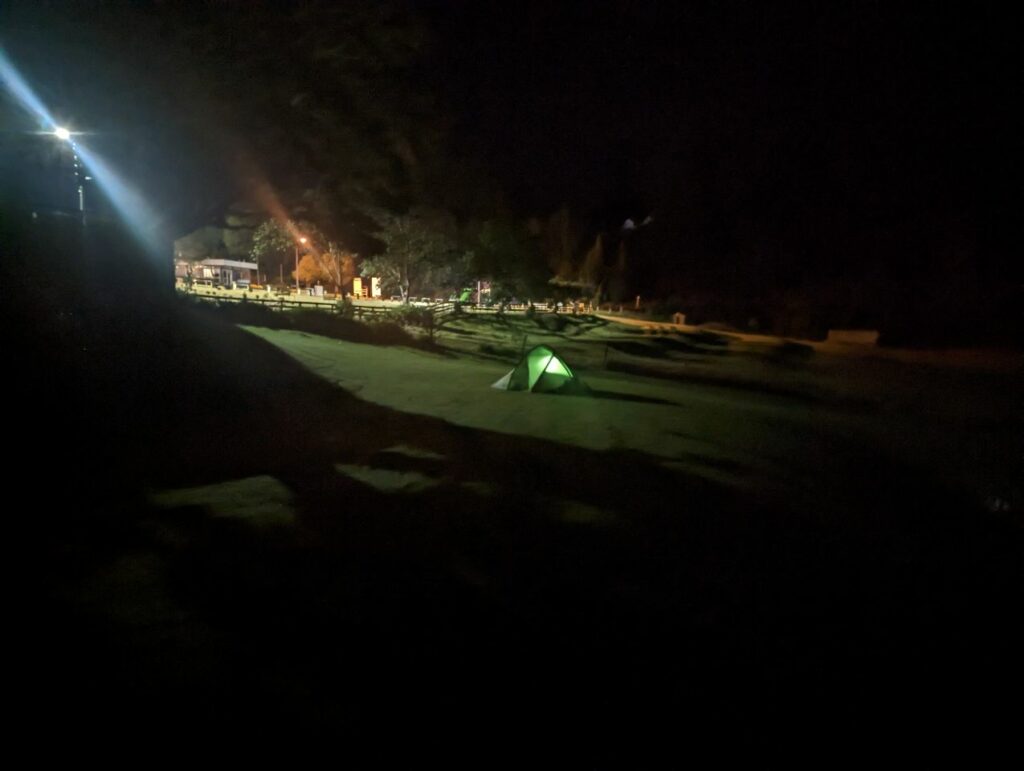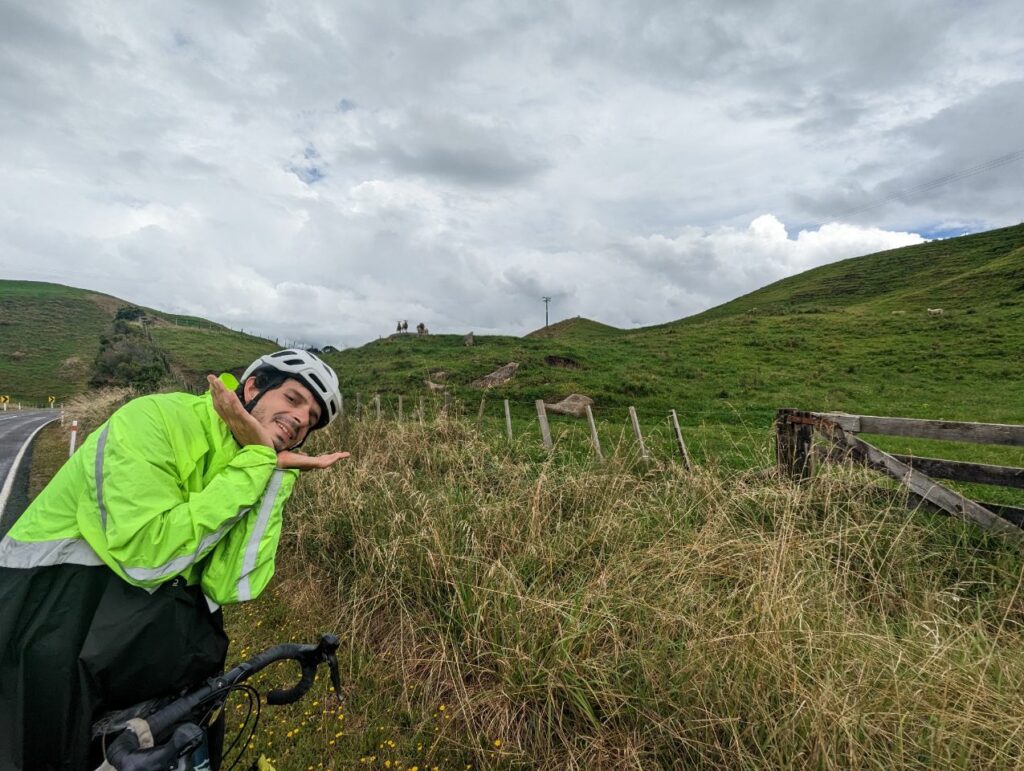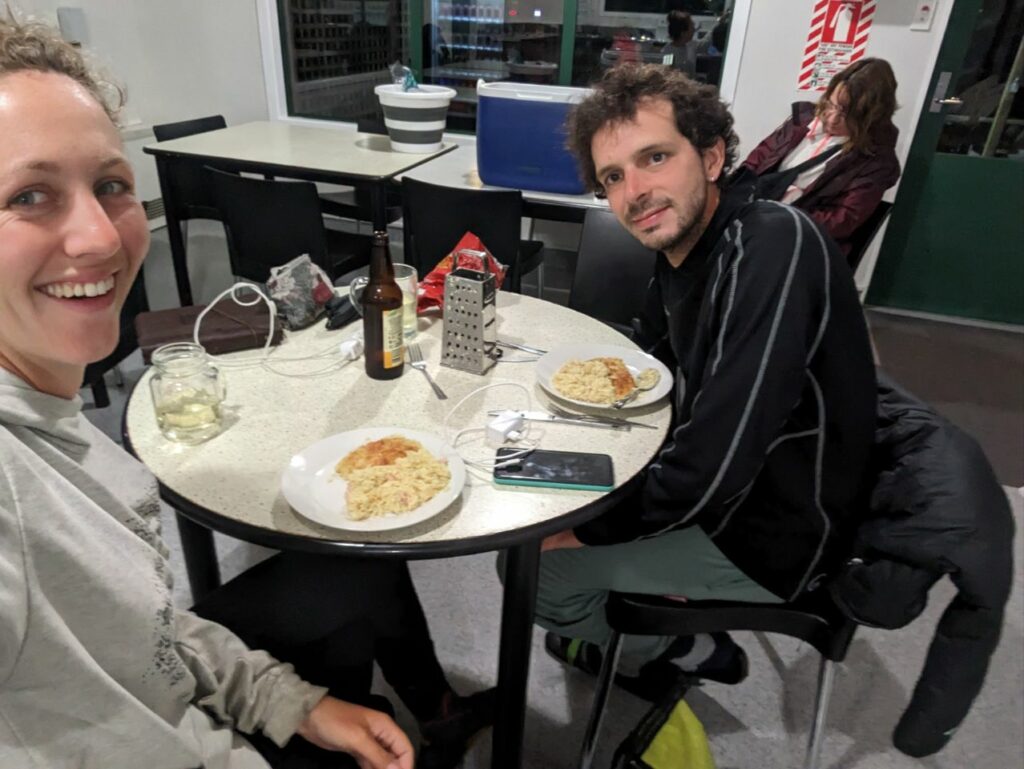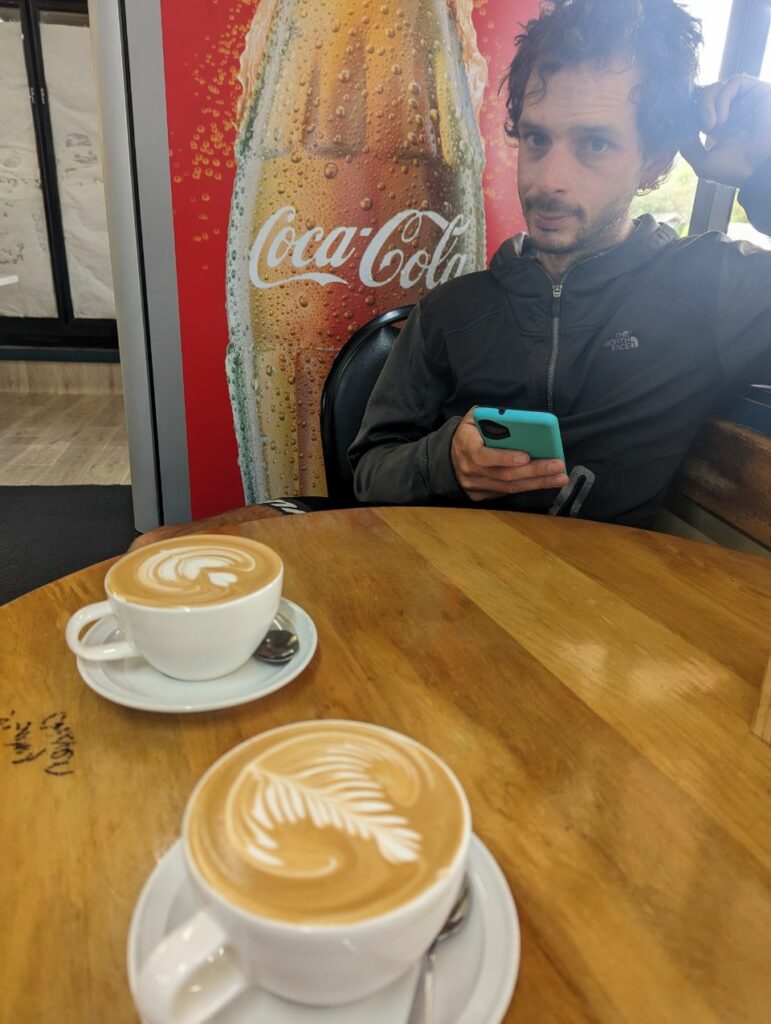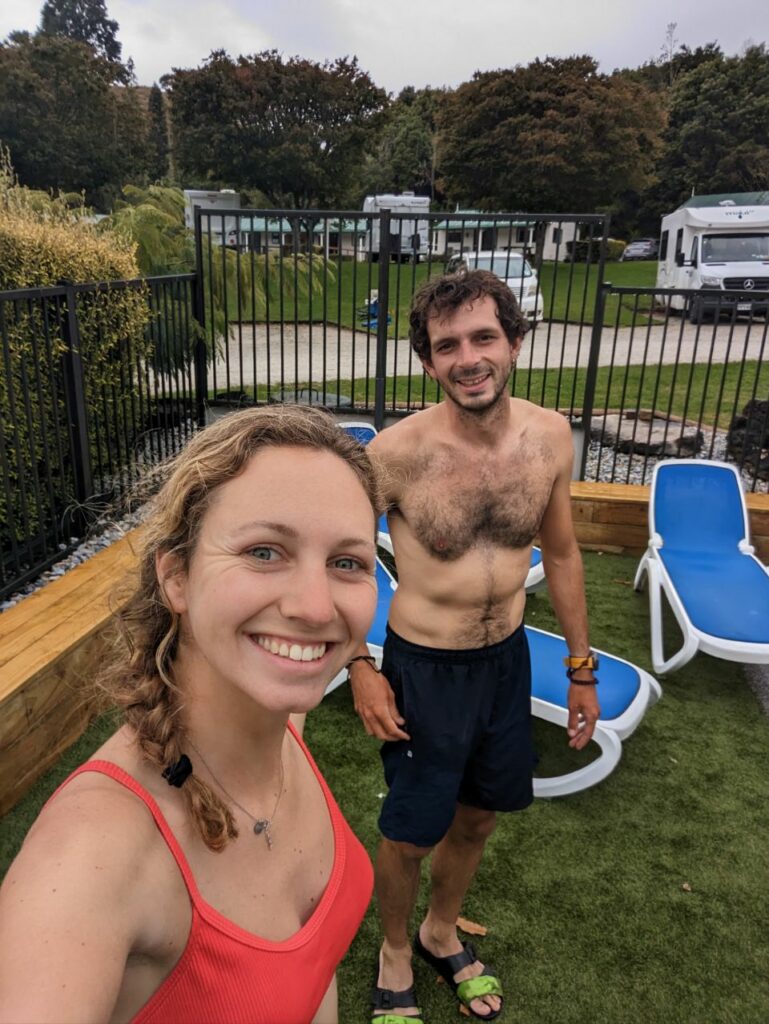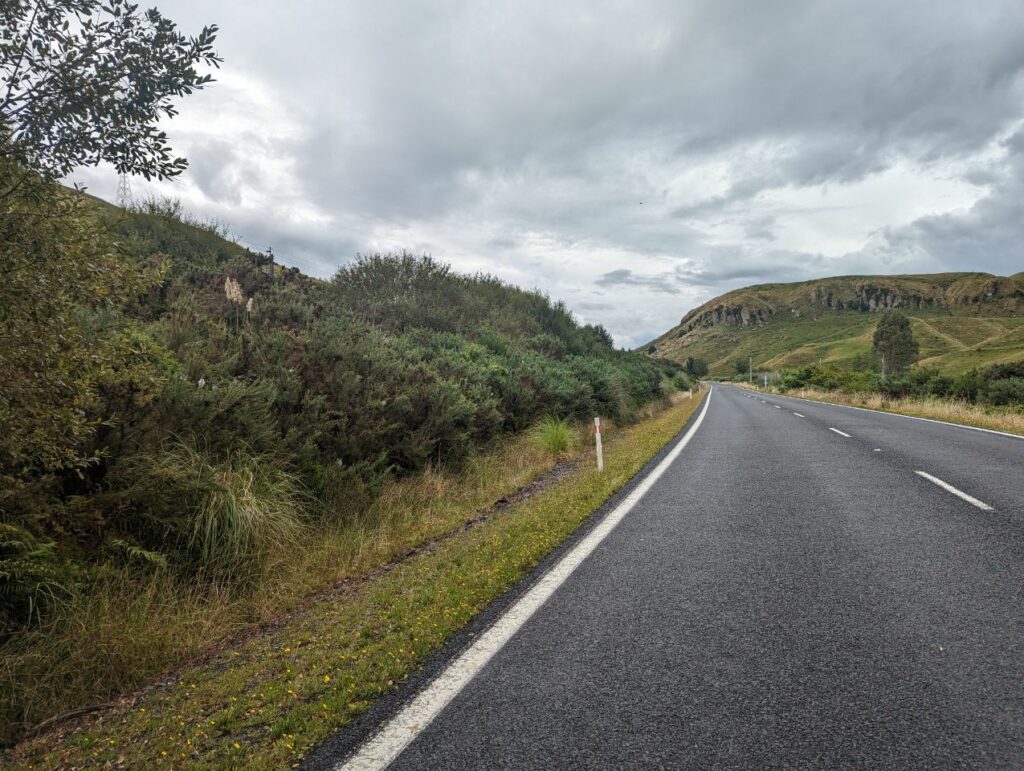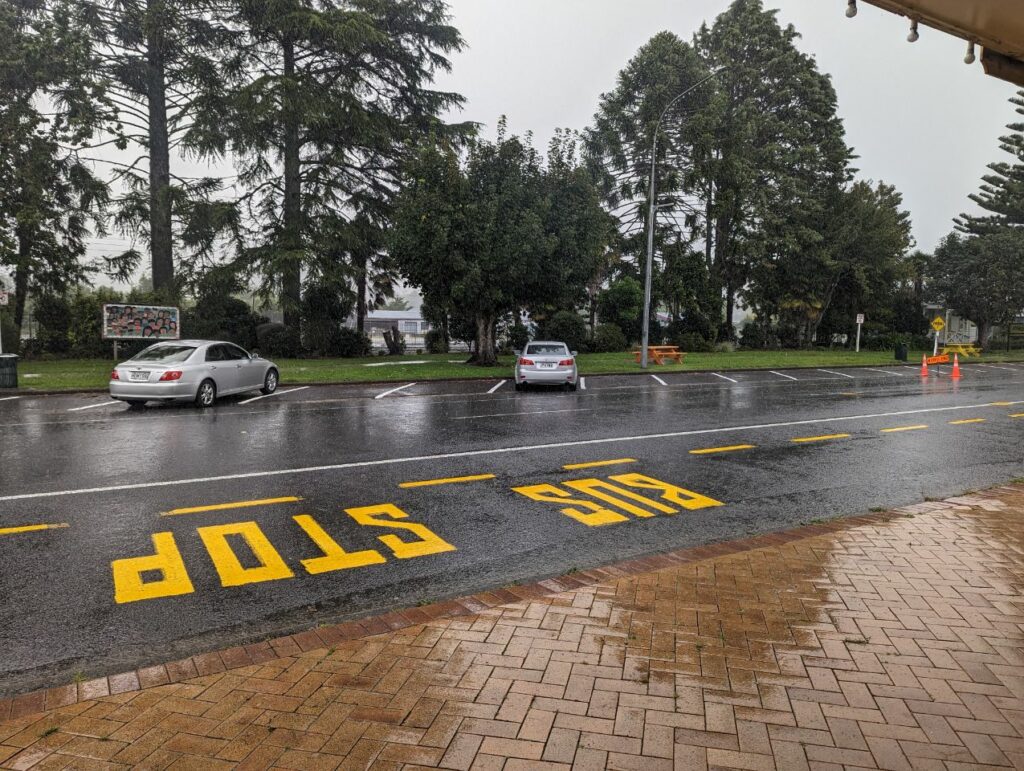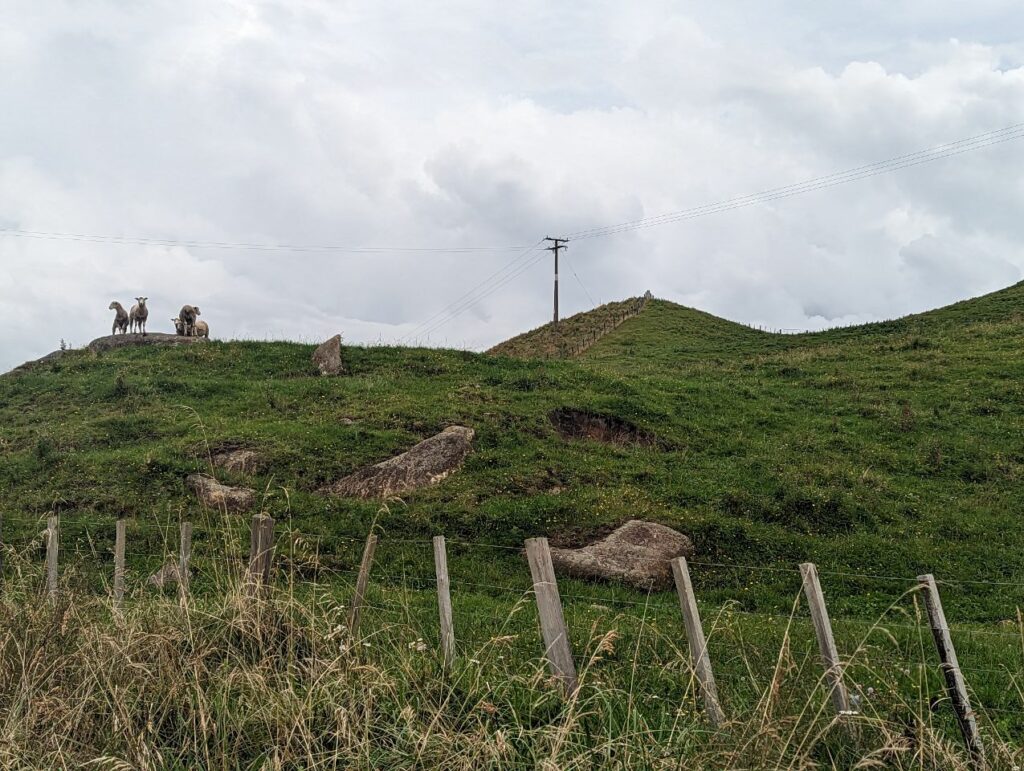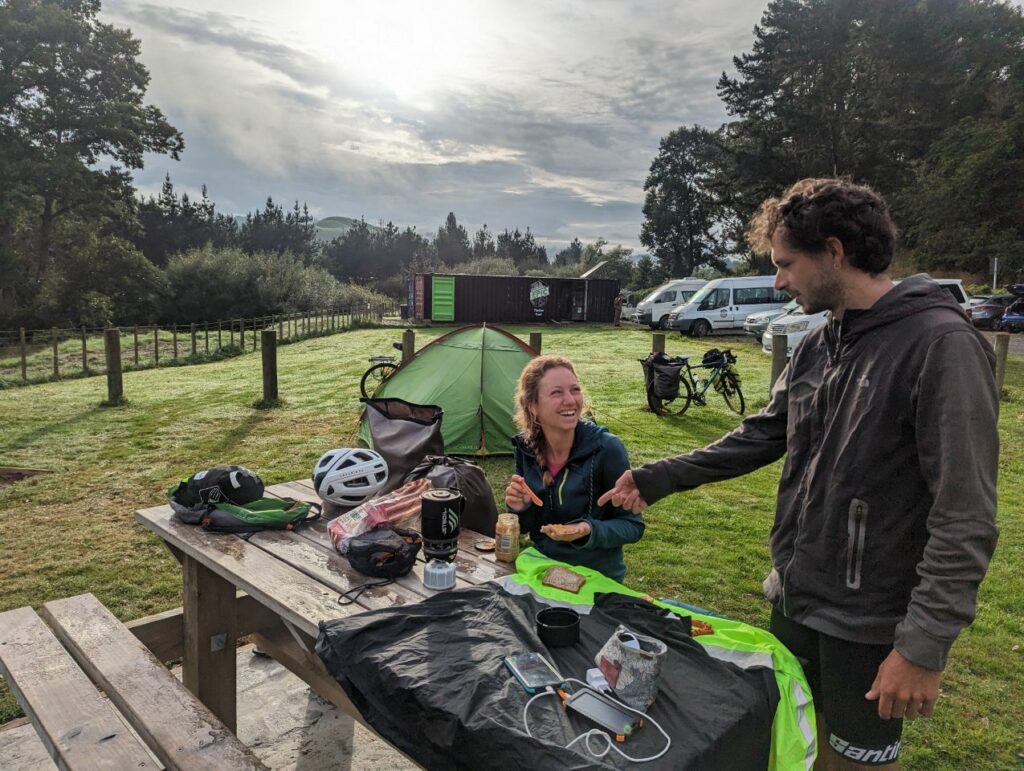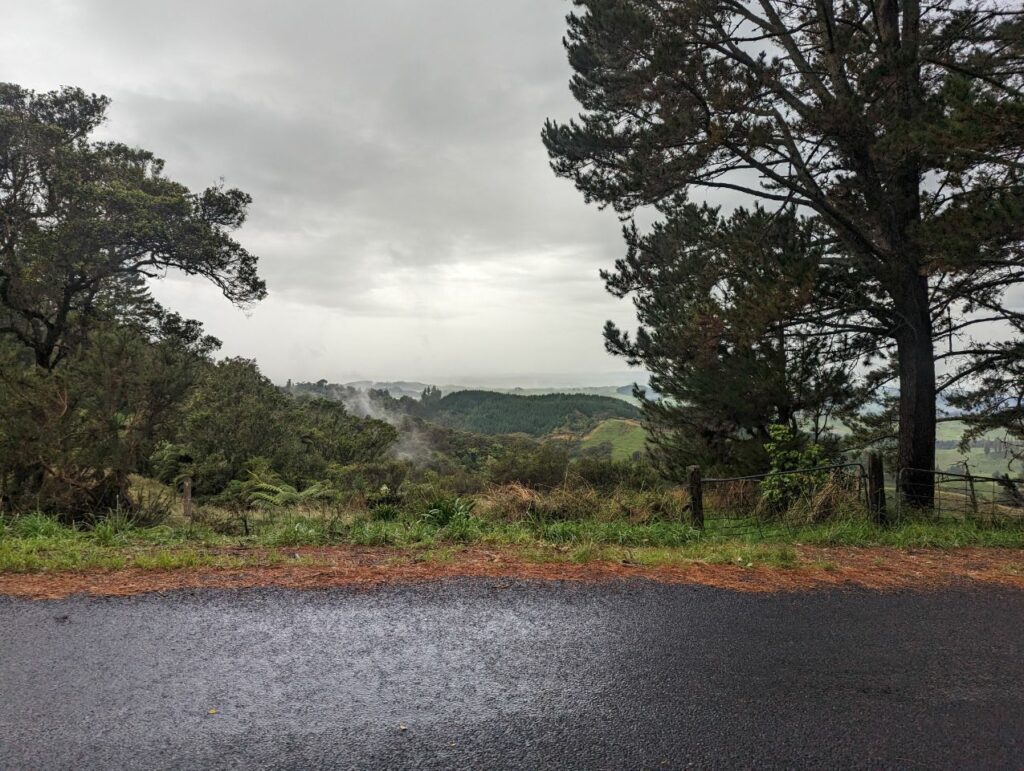Grosse dernière journée ! On s’attendait pas à ce qu’elle soit si difficile entre la pluie qui nous a suivi tout du long mais surtout le plus dur c’était la pause repas qui n’est arrivé qu’à 15h car il n’y avait pas d’endroit où s’abriter avant ! Donc on fait une grosse pause repas avant de repartir. Au moment du départ c’est la saucée alors Martin prend le temps de reréparer son vélo Mais moi je mets la pression pour arriver à temps au camping et se faire un dernier plouf au spa Donc on trac les derniers 16kms avec une bonne montée Il pleut pas mal à l’arrivée mais on décide de quand même mettre la tente c’est la dernière nuit en tente alors il fait !! Petit spa pour finir cette belle journée puis repas et au lit
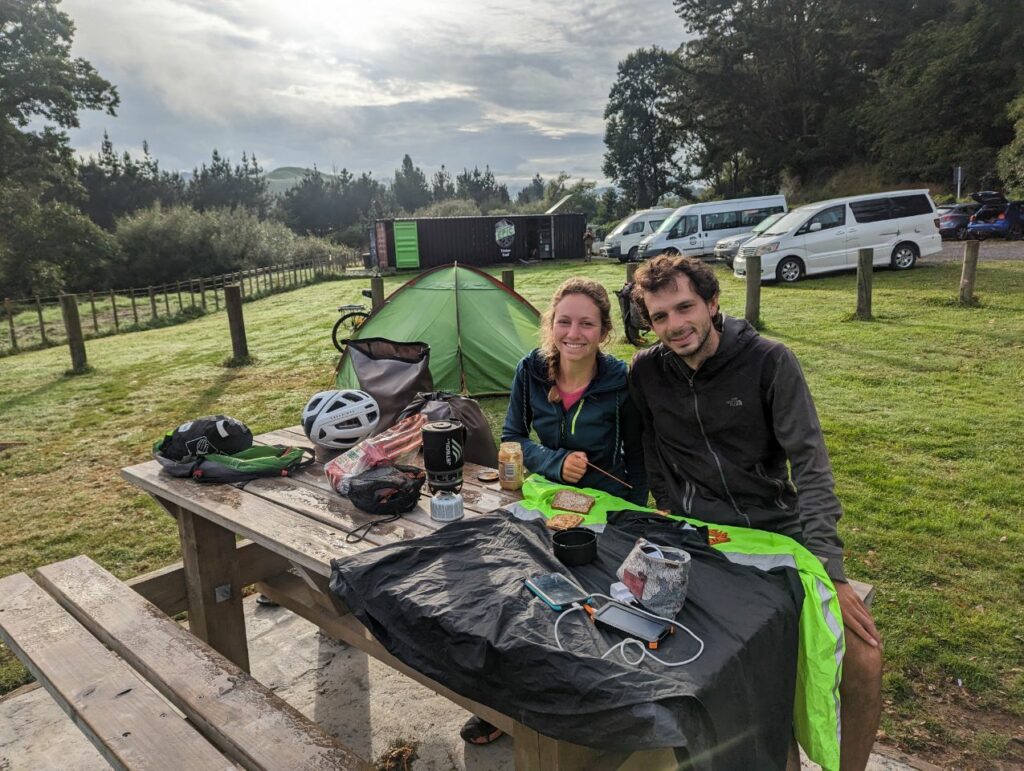
WAITOMO
23 FEBRUARY 2023
Waitomo is a rural community in the King Country region of New Zealand’s North Island. There are several solutional cave systems in the area around the village, which are popular tourist attractions. Restaurants and accommodation are centred in the village to serve visiting tourists.
The word Waitomo comes from the Māori language: wai meaning water and tomo meaning a doline or sinkhole; it can thus be translated to be « water passing through a hole ».[1] The caves are formed in Oligocene limestone.[2]
The historic Waitomo Caves Hotel is located in Waitomo Caves village.[3]
History[edit]
The village Waitomo Caves is named for the hundreds of caves present in the spectacular karst landscape.
The limestone landscape of the Waitomo District area has been the centre of increasingly popular commercial caving tourism since before 1900. Initially mostly consisting of impromptu trips guided by local Māori, a large cave system near Waitomo Caves were nationalised by the Crown[4] and managed as a (relatively genteel) tourism attraction from 1904 onwards.[5] A 1915 guide said, « It is reached by railway to Hangatiki, thence 6 miles by coach along a good road ».[6]
A visit to Waitomo Caves made number 14 amongst a list of 101 « Kiwi must-do’s » in a New Zealand Automobile Association poll of over 20,000 motorists published 2007,[7] and in 2004, around 400,000 visitors entered caves in the area.[5]
The Waitomo Caves Museum provides information about the karst landscape, caves and caving and the history of the area.

